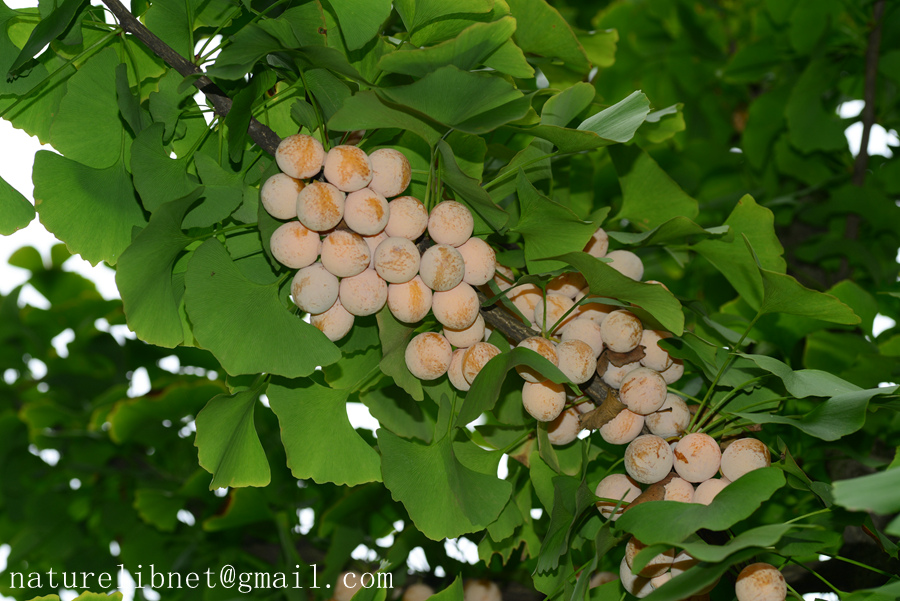银杏 Ginkgo biloba
- Scientific Name: Ginkgo biloba L.
- Ref: Mant. Pl. 2:313. 1771
- English Common Name: maidenhair tree, ginkgo
- Chinese Common Name: 银杏 yínxìng, 白果 báiguǒ
- Japanese Common Name: イチョウ [銀杏] ichō, ギンナンノキ [銀杏の木] ginnannoki (ギンナン ginnan for the ginkgo nut)
- Family: Ginkgoaceae
- Genus: Ginkgo
- Distribution: Scattered in broad-leaved forests and valleys on acidic, well-drained, yellow loess (pH = 5-5.5); 300-1100 m. Perhaps native in NW Zhejiang (Tianmu Shan); widely and long cultivated below 2000 m in Anhui, Fujian, Gansu, Guizhou, Henan, Hebei, Hubei, Jiangsu, Jiangxi, Shaanxi, Shandong, Shanxi, Sichuan, Yunnan.
- Photo: 04/04/2013, Hangzhou, Zhejiang
Trees to 40 m tall; trunk to 4 m d.b.h.; bark light gray or grayish brown, longitudinally fissured especially on old trees; crown conical initially, finally broadly ovoid; long branchlets pale brownish yellow initially, finally gray, internodes (1-) 1.5-4 cm; short branchlets blackish gray, with dense, irregularly elliptic leaf scars; winter buds yellowish brown, ovate. Leaves with petiole (3-)5-8(-10) cm; blade pale green, turning bright yellow in autumn, to 13 × 8(-15) cm on young trees but usually 5-8 cm wide, those on long branchlets divided by a deep, apical sinus into 2 lobes each further dissected, those on short branchlets with undulate distal and margin notched apex. Pollen cones ivory colored, 1.2-2.2 cm; pollen sacs boat-shaped, with widely gaping slit. Seeds elliptic, narrowly obovoid, ovoid, or subglobose, 2.5-3.5 × 1.6-2.2 cm; sarcotesta yellow, or orange-yellow glaucous, with rancid odor when ripe; sclerotesta white, with 2 or 3 longitudinal ridges; endotesta pale reddish brown. Pollination Mar-Apr, seed maturity Sep-Oct. (Flora of China)


04/11/2013, Hangzhou, Zhejiang

03/24/2016, Hangzhou, Zhejiang

03/24/2016, Hangzhou, Zhejiang

